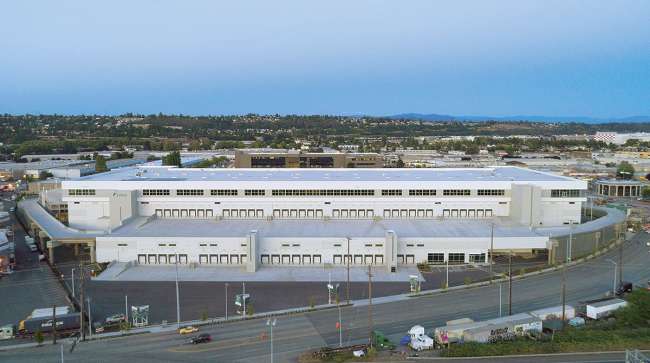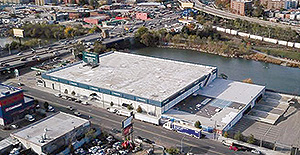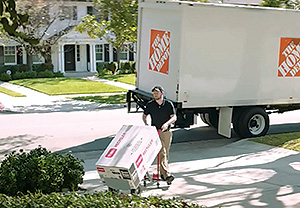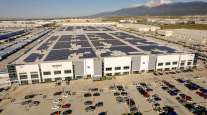Special to Transport Topics
Retailers, Logistics Firms Establish Warehouses Closer to Cities

[Stay on top of transportation news: Get TTNews in your inbox.]
Retailers and logistics firms are establishing warehouses closer to large urban centers to keep up with rising consumer demand for faster delivery of products ordered online, industry experts said.
To what degree the supply chain will change as a result is not yet known, but some industry experts believe many companies will expand warehouse space and boost inventories closer to densely populated areas as e-commerce continues to grow. This trend holds especially true for same-day delivery, which is becoming an increasingly common option.
When the phrase "last mile" has become overused, we need to talk about logistics real estate differently. Here's how @Prologis categorizes properties and the methodology used: https://t.co/qbIt0MeMuT pic.twitter.com/r93sgNeOUt
— Prologis (@Prologis) September 17, 2019
“Getting closer to end consumers is one way in which users of logistics facilities can increase service levels — providing more, but shorter, trips to consumer households more quickly,” said Melinda McLaughlin, vice president of research for Prologis, a major developer of logistics sites.
“The largest, densest markets often have the greatest challenges to on-time delivery, such as high congestion, which increases the importance of well-located facilities,” she said. “For freight patterns, this means a more decentralized network, optimized for speed and proximity.”
A major drawback, however, for leasing or buying warehouse space in or near urban areas is the high cost of real estate in those zones.
One way to contend with the space constraints and cost considerations is to build vertically with multistory warehouses — a strategy that has gained traction in densely populated parts of Asia and Europe.
In what Prologis describes as a first-of-its-kind project in the United States, the company opened a multistory warehouse near Seattle in September, with Amazon and The Home Depot among the first customers.
The move reflected what some say is the beginning of a trend toward warehouses built to expand vertically instead of horizontally near large urban centers.
“I believe these multistory facilities will become more and more common across the country, given land scarcity and rising rents in urban areas,” McLaughlin said, adding that a “critical need” exists for distribution facilities to meet the increasing pace of delivery.

Prologis' multistory warehouse facility in the Bronx. (Prologis)
In New York, for example, Prologis owns and operates a multistory facility known as Bronx 1, and “we’re aware of other multistory facilities that are under development in that market as well,” McLaughlin said.
Amazon and The Home Depot both confirmed that they had reserved 500,000 square feet and about 100,000 square feet, respectively, at Prologis’ multistory warehouse near Seattle.
An Amazon spokesman said the company is investing in large fulfillment centers, delivery stations and partner pickup locations that are closer and closer to customers, who are concentrated near large urban areas. However, the spokesperson did not disclose whether Amazon had plans to move goods to other facilities similar in size and scope to the Prologis warehouse.

Home Depot home delivery. (Home Depot)
Real estate developers can charge a rent premium near urban centers “because many businesses such as Amazon and The Home Depot are willing to pay,” said Matt Huckeba, chief operating officer of Spend Management Experts, a transportation, distribution and fulfillment consulting firm. “At the same time, however, the cost to acquire the land and build such a facility is often more expensive than the traditional warehouse,” thus creating demand for a multistory facility.
Multistory warehouses are not yet common in the United States, but may become more prevalent as logistics firms contend with scarce capacity in high-demand areas, including those closer to urban locations as well as near ports, Huckeba said.
“Despite rents being at a premium rate, the overall long-term cost for the tenant should be lower because they can expect cheaper transportation costs plus a larger labor pool,” he said. “But outside of the U.S., they are more popular due to space concerns.”
Some within the transportation industry are less sanguine about the likelihood of a major shift toward warehousing near urban centers, or the need for a large number of multistory warehouses in the near future.

“We obviously see the development of multistory projects, but as a third-party warehouse provider — and we’re one of the largest — I can tell you that has not yet transcended down into a customer contacting us and saying, ‘I’d like to put 1,000 pallets in a building in Manhattan,’ ” said William Mahoney, senior vice president of sales at NFI Industries. “It’s not that I’m saying it’s not real, and it may not eventually happen, but I’m definitely saying it’s more on the futuristic side. Today, if I go through our pipeline and our massive growth and expansion, million-square-foot buildings are going up in the industrial sector.”
However, Mahoney did not discount the possibility of a proliferation in multistory warehouses or warehouse space closer to urban areas that might one day occur.
“It starts with real estate, the infrastructure gets built, and in 10 years from now, I may give you a completely different answer,” he said.
NFI, based in Camden, N.J., ranks No. 19 on the Transport Topics Top 100 list of the largest for-hire carriers in North America.
On a more global scale, however, multistory warehouses already are the norm in key markets like Singapore, Hong Kong and Japan, said Sam Eid, executive vice president of supply chain solutions at Toll Group, a global transportation and logistics firm based in Australia.
He described the rise of multistory warehousing as a “key innovation shaping the future of our industry,” adding that these warehouses will be viable in markets “with high land cost and limited land availability, and great access to large population centers.”
It’s still an open question whether multistory warehouses will take hold in the United States on a large scale. However, most of those involved in shipping or warehousing interviewed for this story agreed that demand is rising for warehouses closer to customers in large urban centers.
“We have seen customers gravitate toward being closer to end customers even at the expense of setting up multiple warehouses and increasing their cost to serve,” said John King, director of customer solutions at logistics firm GlobalTranz. “In fact, we just spoke with a customer that was considering splitting one warehouse into two. This customer is aware of the increased costs, but felt it was worth it for improved customer service.”
The rise in e-commerce is changing traditional freight patterns based on regional distribution centers and relatively infrequent full truckloads, King said. The emerging model involves local distribution centers with shipping patterns characterized by a higher frequency of partial, less-than-truckload and multistop truckload shipments, he said. “Shippers are positioning goods closer to the end consumer in an attempt to speed the final mile.”
The trend also is affecting freight patterns via an increase in hub-and-spoke distribution models “to better accommodate forward stocking locations that have been set up close to population centers,” King added, noting there is “accelerated demand” for same- and next-day services from these new locations.
As logistics providers and retailers open and expand facilities closer to population centers, they’re also shifting them closer to major airports.
“We recently expanded and moved our Chicago warehouse — and proximity to the airport was critical in our decision-making,” said Brian Bourke, vice president of marketing for Seko Logistics.
Meanwhile, the consumer sector is driving the increase in demand for very short delivery times, even including same-hour deliveries in a growing number of business models.
“The types of goods within the multistory facilities would naturally be determined by the customers leasing the space, but we would expect to see retailers, primarily, interested in these spaces given their proximity to consumers,” said McLaughlin of Prologis.

Amazon home delivery. (Amazon News via Twitter)
Ben Wiesen, president of Carrier Logistics Inc., a provider of management software for less-than-truckload operations, cited many of the same trends.
The way consumers receive goods now — “even things that people said would never be displaced by electronic shopping” — is radically changing, Wiesen said.
The amount of online retail in the clothing industry, for example, may eventually surpass sales at brick-and-mortar stores, he said.
“In less than a decade, consumer behavior has changed completely. No longer do we go out shopping, try things on, select the right product, and return home. Now we speculate on what we think we want, whether fit, size or style,” Wiesen said. “The warehouse has become the stock room for the internet shopper, a cardboard box the extent of floor stocking, and the delivery vehicle has become the checkout clerk.”
Traditional commercial dock-to-dock trucking should largely be unaffected by these changes, Wiesen said. “But pool distribution, store deliveries and residential deliveries are changing at a remarkable pace. And trucking is reacting and adjusting to provide that delivery vehicle when and where needed.”
Want more news? Listen to today's daily briefing:




